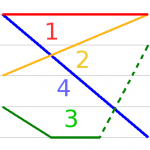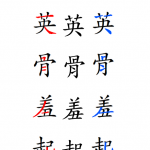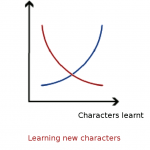Articles in the ‘Intermediate’ category Page 28
-
What your Chinese course will not teach you
Taking a Chinese course will give you a framework for learning the language, but it’s far from enough. This article is about what you need to do apart from going to class.
Read → -
Learn Chinese character meaning and pronunciation together
A large majority of all Chinese characters look the way they do because of how they are pronounced. You can use this to your benefit if you learn Chinese character meaning and pronunciation together.
Read → -
Listen before you read: Improve your listening ability
Listening ability is often overlooked when learning Chinese. Make sure you get the most out of the listening resources you do have and improve your Chinese listening ability.
Read → -
Learn Chinese faster by leaving your comfort zone
If you want to learn Chinese faster, you have to make sure you leave your comfort zone and challenge yourself as much and as often as you can. There are many things of doing this, including immersing yourself in language above your current level or putting yourself in situations that demand a higher level of performance. Leave your comfort zone!
Read → -
Learning tones in Mandarin is not optional
Learning tones in Mandarin is not optional. The longer you wait before paying attention to tones, the more you will have to relearn later. If you don’t know the tone, you don’t know the word. It takes time to learn to hear tones and treat them as integral parts of syllables, but the sooner you start, the better.
Read → -
The Hacking Chinese free tone training course
Learning to hear the difference between tones is difficult for many learners. Research shows that speaker variability and a systematic and predictable approach are key to overcoming the problem. With this article, I launch a tone training course, which is meant to provide you with just that. For free!
Read → -
How to verify that you use the right Chinese font
For second language learners, using the wrong font can make learning characters very confusing. In this article, I will help you verify that you have the right fonts installed and discuss what happens if you don’t. This is a follow-up to an earlier article about Chinese fonts for students.
Read → -
Learning to pronounce Mandarin with Pinyin, Zhuyin and IPA: Part 3
As adults, understanding is important when learning pronunciation. One way to achieve this is through the International Phonetic Alphabet (IPA), which will allow you to see the sounds your ears might fail to hear. Learning IPA also means learning basic phonetics, and that will do you good in the long run!
Read → -
The real challenge with learning Chinese characters
The real challenge when learning Chinese characters is not to commit a large number of them to memory, it’s to relate them to each other, including how they are used, how they are different and how they are similar. Creating such an interconnected web is a lifelong project.
Read → -
Improving pronunciation beyond the basics
Learning pronunciation beyond the basics is about knowing where you want to be and where you are now. Then you identify which problems keep you from reaching your goal, and solve them one by one in order of importance. This starts with high-quality practice where you learn to pronounce something correctly, then moves to high-quantity practice where you gradually decrease the effort needed to get it right. After a while, no effort will be required and you will have successfully improved your pronunciation!
Read →









